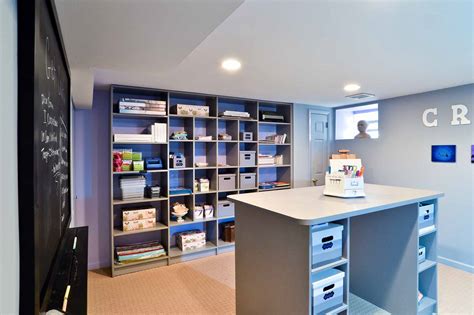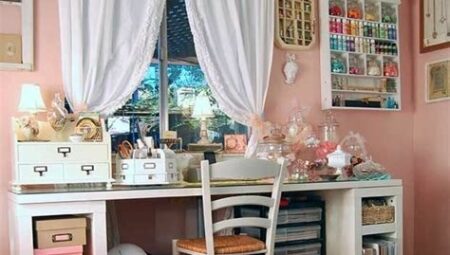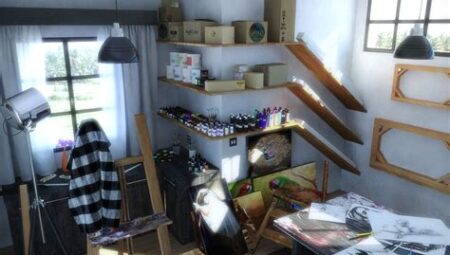Are you looking to create your own dream hobby room but don’t know where to start? In this DIY guide, we will explore the key steps to designing a space that is both functional and inspiring. From choosing the perfect room layout to adding personal touches and decorations, we will cover everything you need to know to create the perfect space for your hobbies and projects. Whether you’re a crafter, artist, or hobbyist, this guide will help you transform any room into a creative and motivating space. Get ready to unleash your creativity and design the hobby room of your dreams!
Choosing the Perfect Room Layout
When it comes to designing a space, the room layout is one of the most important factors to consider. The layout of a room can greatly affect how the space is used and the overall feel of the room. Whether you are designing a bedroom, living room, or office, it is essential to carefully consider the layout to ensure that it meets your needs and maximizes the potential of the space.
One of the first things to consider when choosing the perfect room layout is the size and shape of the room. A smaller room may require a different layout than a larger room, and rooms with unique shapes may require creative solutions to make the most of the space. It is important to take accurate measurements of the room and consider any architectural features or obstacles that may affect the layout.
Another important factor to consider is the function of the room. Different rooms have different purposes, and the layout should reflect this. For example, a bedroom layout will focus on providing a comfortable and restful space, while a home office layout will prioritize functionality and productivity. It is important to consider how you will be using the room and tailor the layout to best suit your needs.
Finally, the aesthetics of the room should also be considered when choosing the perfect layout. The layout should complement the overall design and style of the room, and should create a harmonious and balanced space. It is important to consider the flow of the room and ensure that the layout enhances the overall feel of the space.
Creating a Functional Storage System
When it comes to designing an office or workspace, having a functional storage system is crucial for maintaining a clean and organized environment. The key to creating an effective storage system is to maximize the use of space and ensure that everything has its place.
One of the first steps in creating a functional storage system is to assess the storage needs of the space. This includes taking stock of the items that need to be stored, as well as the frequency of use for each item. This will help determine the type and amount of storage solutions that will be needed.
Next, it’s important to consider the layout of the space and how the storage solutions will fit into the overall design. This may involve incorporating built-in shelving, cabinets, or drawers to maximize the use of vertical space and keep clutter to a minimum.
Finally, organizing and labeling items within the storage system is essential for maintaining an efficient and functional space. Utilizing storage bins, dividers, and labels can help keep items easily accessible and prevent the need for rummaging through clutter to find what is needed.
Selecting the Right Furniture and Equipment
When it comes to designing a space, one of the most important aspects to consider is the furniture and equipment that will be used. The right pieces can make a space feel inviting and functional, while the wrong pieces can make it feel cramped and uncomfortable. Therefore, it’s important to select the right furniture and equipment that will not only fit the space, but also serve its purpose effectively.
One of the first things to consider when selecting furniture and equipment is the size of the space. It’s important to measure the area and take note of any architectural features such as windows, doors, and columns, as these will impact where furniture and equipment can be placed. Additionally, taking note of any existing built-in features, such as shelving or storage units, will help determine what additional pieces will be needed.
Another important factor to consider is the function of the space. Whether it’s an office, a classroom, a living room, or a dining area, the furniture and equipment should be chosen based on the specific needs of the space. For example, an office space may require a desk and chair, while a living room may require a sofa and coffee table. Understanding the function of the space will help guide the selection of furniture and equipment.
In addition to size and function, it’s important to consider the style and aesthetic of the space. The furniture and equipment should complement the overall design of the space, whether it’s modern, traditional, or eclectic. Selecting pieces that coordinate with the color scheme and overall theme of the space will help create a cohesive and visually appealing environment.
Designing an Inspiring and Motivating Space
When it comes to creating a space that is inspiring and motivating, there are several key factors to consider. One of the most important elements is the use of color. Bright and vibrant colors can energize a space and stimulate creativity, while softer, more muted hues can promote a sense of calm and relaxation. The use of natural light is also essential in creating an inspiring environment. Sunlight has been shown to boost mood and productivity, so it’s important to maximize the amount of natural light in a space. Additionally, incorporating plants and greenery into the design can help create a more inviting and uplifting atmosphere.
Another important aspect of designing an inspiring space is the layout and organization. A cluttered and disorganized environment can be distracting and draining, so it’s crucial to create a functional storage system that keeps the space neat and tidy. This may involve utilizing shelving, storage bins, and other organizational tools to keep everything in its place. It’s also important to carefully consider the furniture and equipment that will be used in the space. Comfortable and ergonomic furniture can help promote a positive and productive work environment, while the right equipment and tools can make tasks easier and more enjoyable.
In addition to these practical considerations, it’s also important to infuse the space with personal touches and decorations that reflect the individuality and interests of the people using the space. Whether it’s artwork, photos, or inspirational quotes, these personal touches can help create a space that is truly motivating and inspiring. By carefully considering these factors and incorporating them into the design, it is possible to create a space that is both inspiring and motivating for anyone who uses it.
In conclusion, designing an inspiring and motivating space requires careful consideration of color, light, layout, organization, furniture, and personal touches. By paying attention to these key elements, it is possible to create a space that energizes and uplifts, promoting productivity and overall well-being.
Adding Personal Touches and Decorations
When it comes to designing a space, it’s important to not only consider the layout, storage, and furniture, but also the personal touches and decorations that will make the space truly unique and reflective of your personality. Adding personal touches and decorations is a way to make a space feel like home and to create an environment that is inspiring and motivating.
One way to add personal touches to a space is through the use of artwork and photographs. Whether it’s a piece of art that speaks to you or a photograph that holds special memories, adding these to your space can bring a sense of warmth and personality. Consider creating a gallery wall with a mix of artwork and photographs that represent your style and interests.
In addition to artwork and photographs, adding decorative elements such as plants, candles, and unique home accessories can also help to make a space feel more personal. These elements can add texture, color, and visual interest to a room, making it feel more inviting and lived-in.
Lastly, consider incorporating items that have emotional significance, such as family heirlooms or travel souvenirs. These items can tell a story and add a sense of history and depth to a space, making it feel more personal and meaningful. By adding these personal touches and decorations, you can create a space that truly reflects who you are and what you love.
Frequently Asked Questions
What are some important factors to consider when choosing the perfect room layout for a hobby room?
When choosing the perfect room layout for a hobby room, it’s important to consider the available space, natural lighting, and the type of activities you will be doing in the room. It’s also important to consider the flow of the room and how it can best accommodate your hobby activities.
How can I create a functional storage system for my hobby room?
Creating a functional storage system for your hobby room involves assessing your storage needs, utilizing vertical space with shelves and cabinets, and incorporating storage solutions that are specific to your hobby supplies and equipment.
What are some tips for selecting the right furniture and equipment for a hobby room?
When selecting furniture and equipment for a hobby room, consider the size and scale of the items, as well as the comfort and functionality they provide. It’s also important to choose furniture and equipment that complements the overall design and layout of the room.
How can I design an inspiring and motivating space for my hobby room?
To design an inspiring and motivating space for your hobby room, incorporate elements that reflect your interests and passions. Consider adding motivational quotes, inspiring artwork, and personal touches that make the space feel uniquely yours.
What are some creative ways to add personal touches and decorations to a hobby room?
Adding personal touches and decorations to a hobby room can be done through the use of custom artwork, meaningful mementos, and DIY projects that reflect your personality and style. Consider incorporating elements that bring you joy and inspiration while you pursue your hobbies.
How important is natural lighting in a hobby room and how can it be maximized?
Natural lighting is important in a hobby room as it can affect visibility, mood, and energy levels. To maximize natural lighting, consider positioning work areas near windows, using light-colored paint and decor to reflect light, and incorporating mirrors to amplify natural light throughout the room.
What are some common mistakes to avoid when designing a hobby room?
Common mistakes to avoid when designing a hobby room include overcrowding the space with unnecessary furniture and clutter, neglecting proper storage solutions, and sacrificing comfort for style. It’s important to prioritize functionality, organization, and personal expression when designing a hobby room.



